Peony tulips - the best varieties and growing rules
Peony tulips are hybrids bred by breeders at the beginning of the 17th century. They got the name because of the close resemblance to the shape and doubleness of the peony corolla. They differ in the multi-layered structure of the bud. As a result of selection, several varieties were obtained, differing in color, flowering period and height.
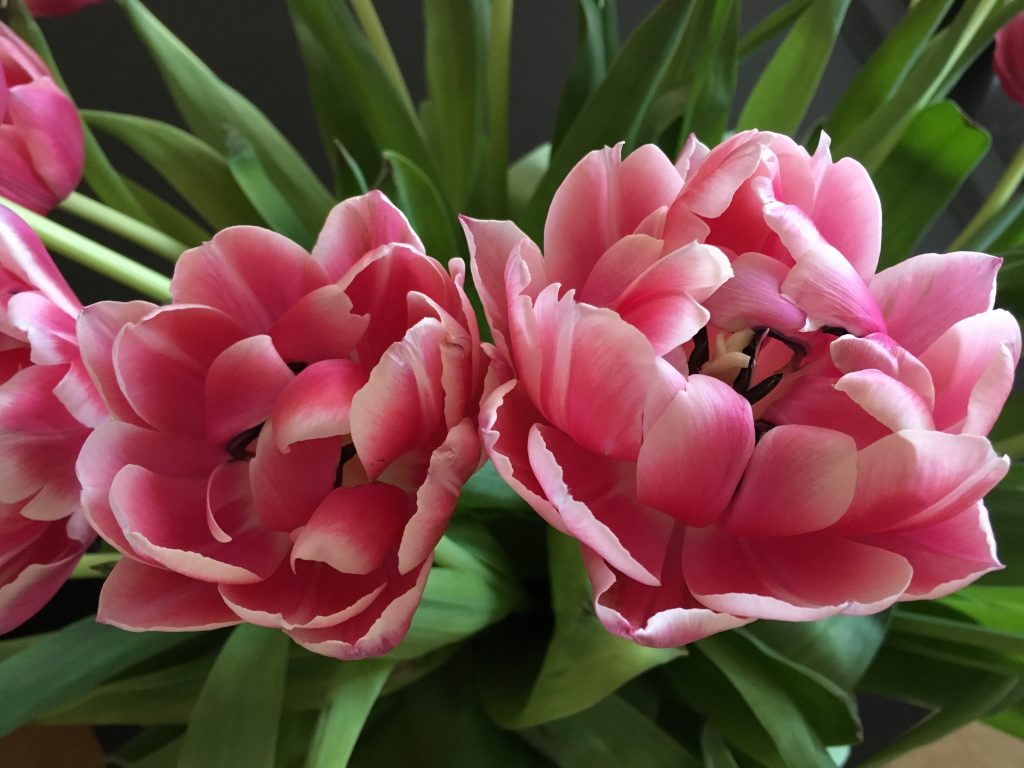
Peony tulips price
Classification rules
Hybrid varieties of peony tulips are conventionally divided by height:
- tall - up to 0.5 m;
- medium-sized, growing up to 0.35 m;
- dwarf, not exceeding a height of 10 cm.
Also divided by flowering time:
- Early subspecies have smaller buds.
- Late ones are distinguished by larger inflorescences, up to 12-16 cm in diameter, and a longer budding period. The average flowering time is 2 to 4 weeks. At the same time, the selling price is higher.
Popular varieties
Exotic Emperor. It stands out in an unusual pale white color with a lot of green stripes. The shape of the petals is rounded, the structure is dense, which provides resistance to external environmental factors. Height is about 35 cm. Flowering occurs in April. The subspecies is more often used for cutting live bouquets and for the improvement of city gardens and park areas.
Double Red Riding Hood. It features a rich red color of large buds and a heterogeneous green color of leaves with purple veins. The shape of the petals is slightly pointed at the ends. Height is about 30 cm. Flowering begins in April-May. To maintain decorativeness, it requires planting in a well-lit area. It is more often used for decorating borders and is grown in a rock garden.
Monte carlo (monte carlo). An early flowering hybrid. Wide yellow buds bloom in mid-April. Stems about 40 cm long. It is grown mainly in flower beds or in pots.
Peach blossom. It has the greatest resemblance to a peony in the shape of a bud with a diameter of up to 12-14 cm and its pink hue. Height is about 35 cm. Differs in a long, lasting up to a month, flowering period, which occurs in May. It is often used for cutting, because the bouquet lasts for a long time.
Humilis tete-a-tete... Dwarf hybrid subspecies. The stem length is no more than 10 cm. The peony-like shape of a red bud with thin green stripes opens up to 5 cm wide. It is grown in groups for decorating alpine slides and in flower beds.
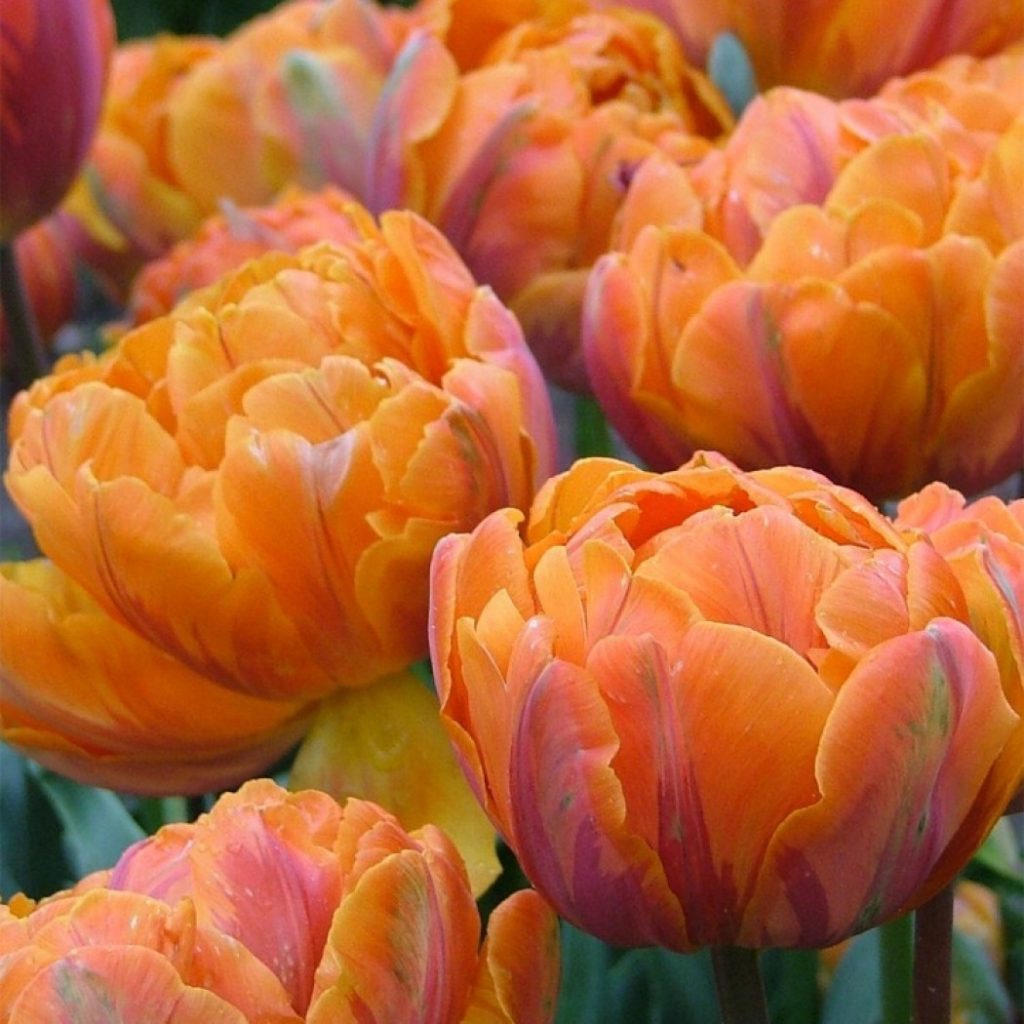
Peony tulips pink
Sensual touch. It has a bright orange shade of inflorescences formed by rounded petals with fringed edges. Height up to 40 cm. Thickets are planted along fences and walls and are used as part of cut bouquets. Blooms from April.
Cartouche (cartouche). Differs in an uneven color with a light middle and pink edging of elongated rounded petals.Stem length 40 cm. Flowering begins in April. Suitable for decorating rooms and outdoor terraces, grown in pots and flower beds.
La belle epogue (la belle époque). Unusual orange buds, more reminiscent of a peony or a fully opened tea rose. Height up to 55 cm. It blooms in late spring and early summer. Suitable for cutting and landscaping garden and park areas.
Mount tacoma. Hybrid variety with late flowering that lasts about 3 weeks, delicate white color. The bud is formed by rounded petals with pointed ends. The main application is for fresh cut.
Royal acrs. Variety of lilac-scarlet shade. Possesses increased resistance to temperature extremes, easily copes with recurrent frosts, which allows growing in open ground not only in the southern regions. Height up to 35 cm. Flowering lasts during the first three weeks of May. It is planted in flower beds and for distillation in flowerpots.
Landing features
Planting material is purchased closer to September, but some gardeners prefer to take care of this in advance, back in July. Suitable for planting are medium-sized bulbs with dense scales.
The most suitable time for planting a peony tulip is September-October, depending on the region. Optimum soil performance is -10 ° С, ambient air - 15 ° С.
Before planting, the corn bulbs are prepared:
- purchased in advance are stored in a dry, darkened room at a temperature of about 15 ° C;
- planting material is inspected for rot and drying;
- soaked for 0.5 hours in a warm solution of potassium permanganate.
A flower crop is not planted in one place for two years in a row. The site is chosen well illuminated by the sun, protected from direct wind currents, with a deep passage of groundwater, because the variety is susceptible to moisture stagnation. Optimum indicators of soil acidity are 6.5-7 pH.
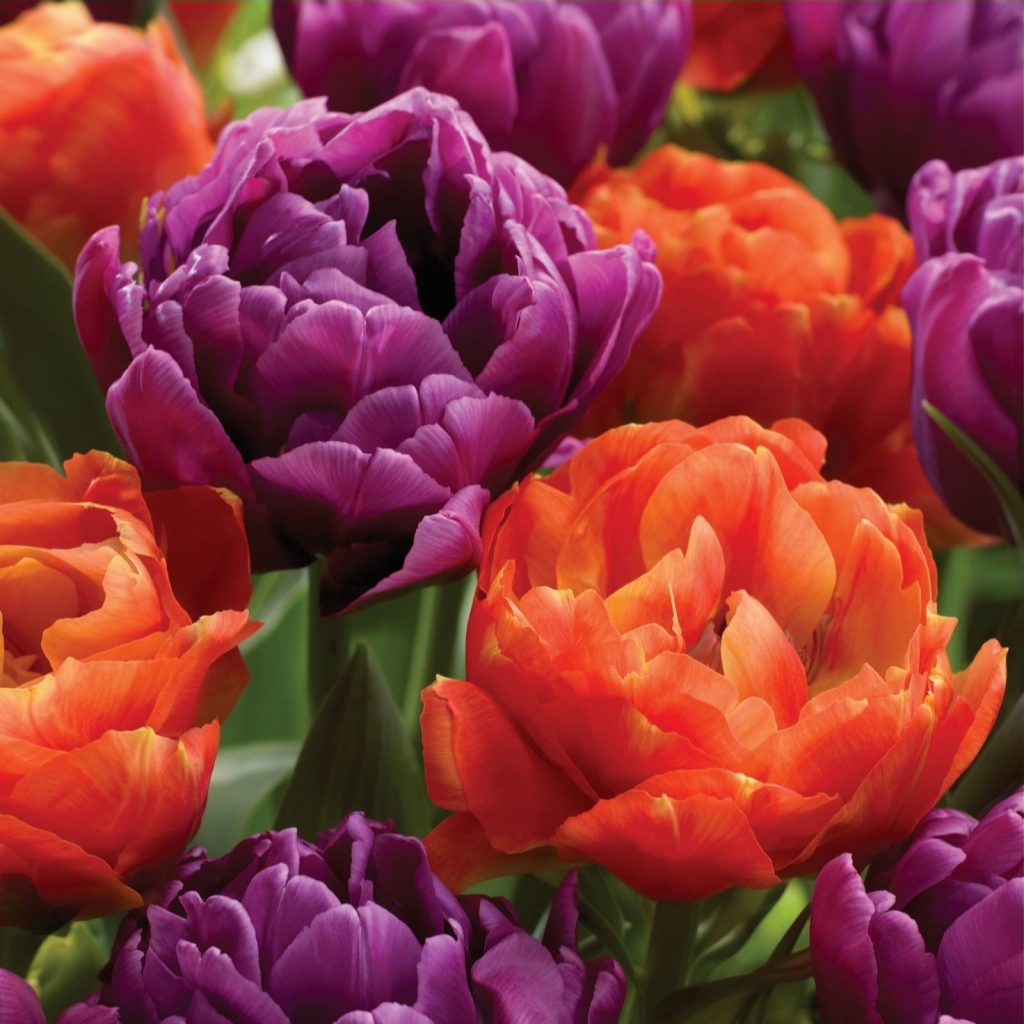
White peony tulip
The soil is adjusted from the required composition:
- the increased acidity is neutralized by adding lime;
- for neutral soil, a mixture of humus, rotted compost and sand is used;
- additionally, the soil is disinfected by watering with boiling water with a small amount of potassium permanganate (weak pink solution).
Landing technology:
- prepare ridges by digging rows at intervals of 20 cm from each other to a depth of about 15 cm for medium-sized bulbs and about 7 cm for small ones;
- at the bottom, drainage is organized from perlite or river sand of a coarse fraction with a thickness of 3 cm;
- planting material is planted at a distance of 10 cm;
- root tubers are sprinkled with earth, watered;
- the ridges are mulched with a peat mixture, sawdust or coniferous spruce branches.
Care rules
The planted bulbs are not cared for until spring. The main care begins with the onset of warmth.
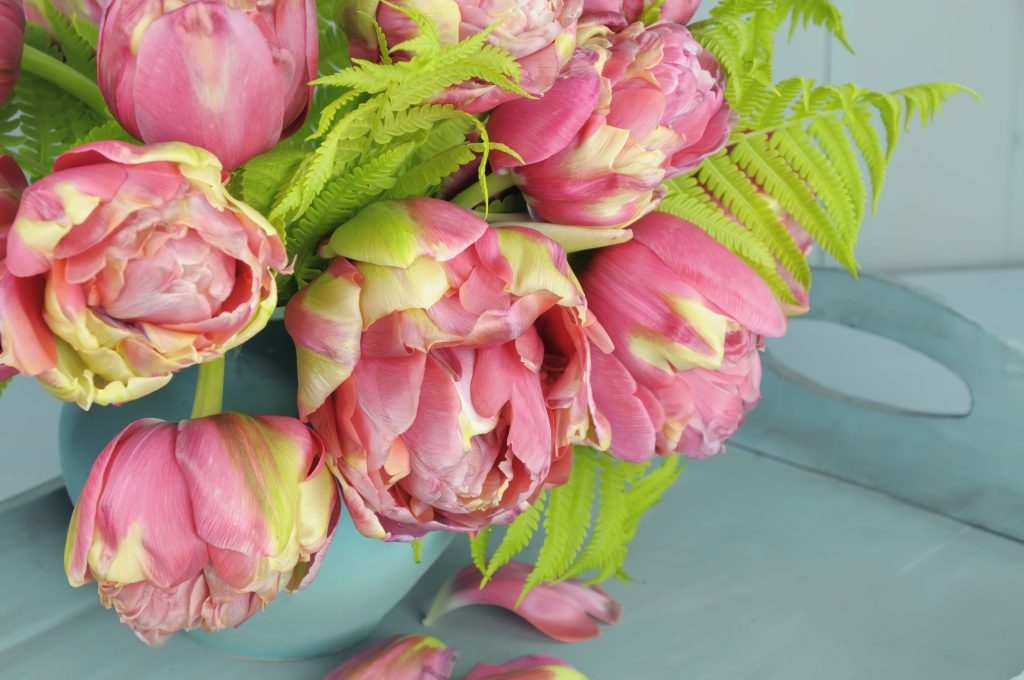
Peony tulips photos of their varieties and names
After landing
In the spring, with the final establishment of warm weather, the rows are freed from mulch, watered and the first top dressing is applied with an increased proportion of nitrogen. After watering, the soil is loosened to break up the resulting earth crust to improve aeration of the soil layers and free air penetration to the roots.
Before the beginning of budding, they resort to the second introduction of nutrition - the amount of nitrogen is reduced, replacing it with potash and phosphorus fertilizers.
After flowering
The bushes are pruned as the aerial part dries. If you want to save the bulbs for later planting, only cut the stems and leaves.
If there is no need to preserve planting material, faded tulips are dug up together with root tubers.
For the tubers remaining in the ground, a third top dressing with potassium and phosphorus is applied to saturate them before storing them. After digging, the planting material is sorted out, sorted and folded into a darkened place, initially for a month at a temperature of 20 ° C, then lowering the degree to 15 ° C, regularly checking the safety.
Reproduction methods
Peony varieties are propagated in two main ways: children and seeds.
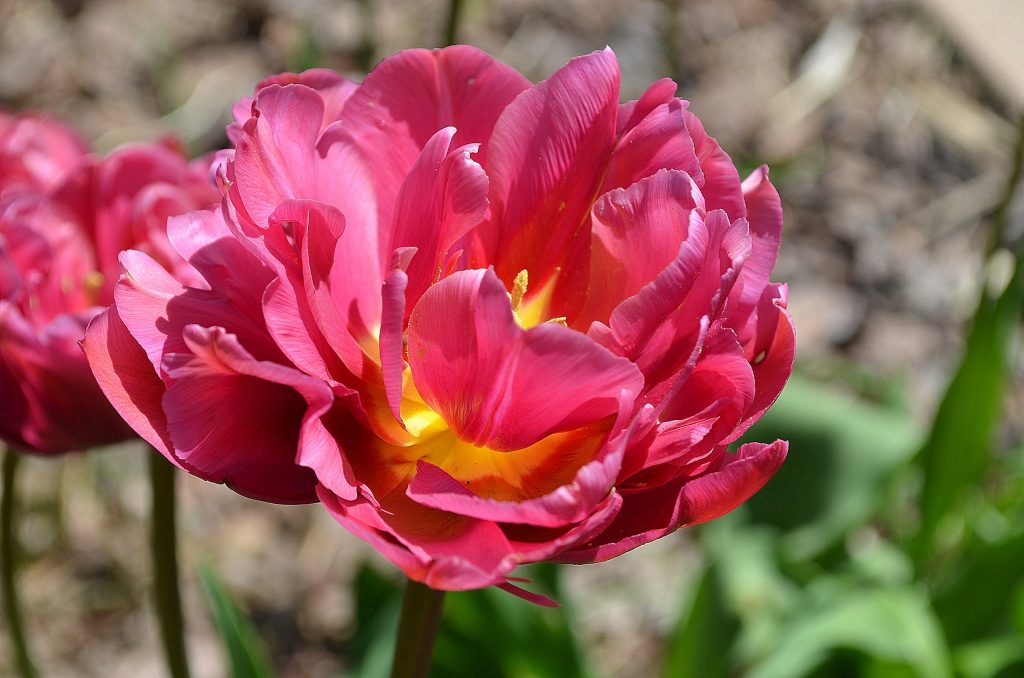
Peony tulip variety name
- Babies are formed from the main bulb. They are separated from the mother bush after digging the root tuber out of the ground. Children are planted in the fall.Features of reproduction by this method - flowering begins only from the second season from the moment of planting. In the first year, the plant only grows vegetative mass.
- Private gardeners rarely use the seed propagation method, because it is labor-intensive and ensures the flowering of the culture only 3-4 years after the moment of planting. This breeding method does not convey maternal quality characteristics, however, it creates the opportunity to develop new varieties, therefore it is more often used by breeders.
Prevention of diseases and pests
Tulips are among the least resistant to diseases and pests of flower crops, and peony varieties are no exception. On hybrids, you can often see:
- onion mite - it penetrates into plant tissues through damage to the bulb, as a result of which the foliage turns yellow, the plant withers;
- slugs and snails, which spoil the decorative appearance by eating leaves, stems and buds;
- aphids - it feeds on plant juices, causing the death of the flower;
- a bear that damages partially or completely the root bulbs, leading to wilting of the aerial part.
Common infectious diseases include:
- gray rot, appearing on leaves, stems and buds in the form of a yellow spot, subsequently turning gray;
- powdery mildew, a sign of which is the appearance of a white bloom;
- root rot, causing rotting of the bulb and subsequent death of the plant.
As a prevention of the development of infectious diseases in the evenings, the flower culture is sprayed with a weak pink solution of potassium permanganate. When the first signs of pests are found, the ridge is watered with insect repelling infusions based on aromatic herbs, spices, and onion husks.
Advantages and disadvantages of growing
| pros | Minuses |
|
|
Testimonials
Peony tulips are popular with gardeners because of the high decorative effect of terry buds. They are often planted for decorating personal plots, decorating flower beds, curbs, rockeries, alpine slides.

